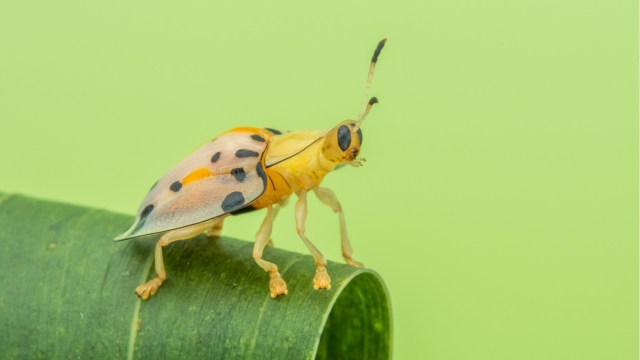What was it like when mammals evolved and rose to prominence?
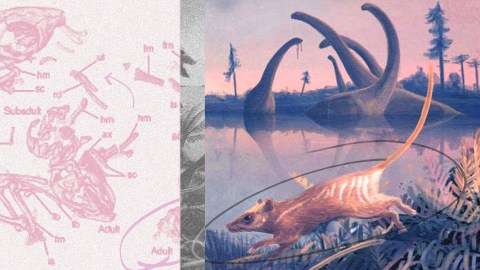
The history of life on Earth took many meandering turns before it gave rise to us.
When Earth first formed, all the raw ingredients for life — atoms, molecules, a potentially habitable planet at the right distance from its star — were already in place. While life itself arose relatively quickly, it took billions of years for that life to become complex, differentiated, and macroscopic. The four key developments that took us there were:
- horizontal gene transfer, enabling an organism to gain useful genetic sequences from other species,
- eukaryotic cells, whereby individual cells can have their own specialized organelles, enabling the performance of unique functions,
- multicellularity, allowing further specialization and differentiation,
- and sexual reproduction, enabling slowly-reproducing organisms to have dramatically different DNA sequences and physical traits from their parents.
All of this, in tandem, led to the Cambrian explosion some 550–600 million years ago. But the rise of warm-blooded mammals to prominence would take nearly another half-a-billion years.
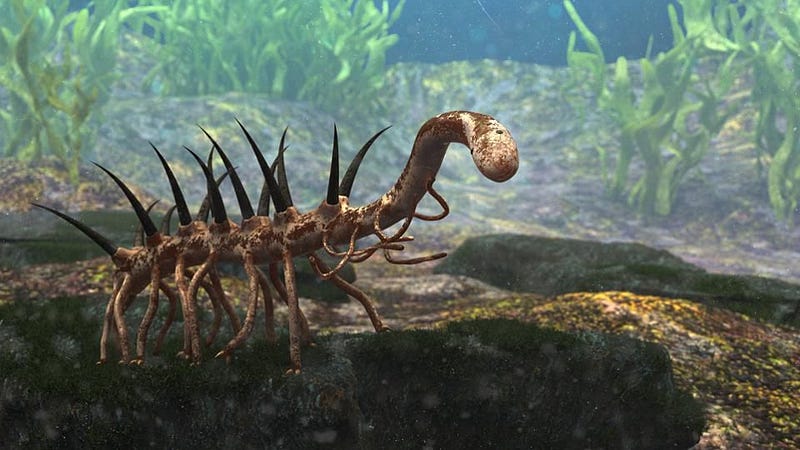
Biologically, we classify organisms by their genetic and evolutionary traits. Approximately 1.5 billion years ago, eukaryotic life diverged into multiple kingdoms, with separate kingdoms eventually giving rise to modern plants, animals, and fungi. While life can mutate and evolve to become competitive in a variety of ecological niches, it’s very difficult to displace an already-established organism that successfully occupies it.
From an evolutionary perspective, what life often needs as a catalyst for change is an extinction event. This can come from any event, internal to Earth or external to it, that leads to the demise of a large percentage of species.
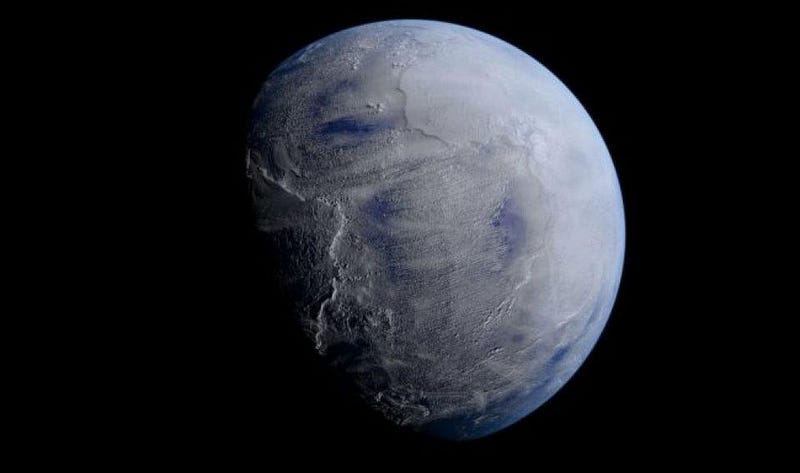
While a snowball Earth scenario, caused by photosynthetic organisms poisoning their environment with oxygen, may have played a critical role more than 2 billion years ago, the emergence from a later snowball Earth (or a severe, widespread glaciation) may have led directly to the Cambrian explosion.
Some critical stages that occurred in the millions of years just preceding the Cambrian explosion include:
- the development of bilateral symmetry, leading to animals with tops and bottoms as well as fronts and backs; worms, dating to around 600 million years ago, may have been first.
- Deuterostomes (which includes all animals with spinal cords) and protostomes (which includes all of the insects, crustaceans, and arachnids) appear for the first time some 580 million years ago.
- and the first animal trails, suggesting that they move under their own power, came into being some 565 million years ago.
At the start of the Cambrian explosion, jellyfish, starfish, arthropods and mollusks were the dominant forms of life.
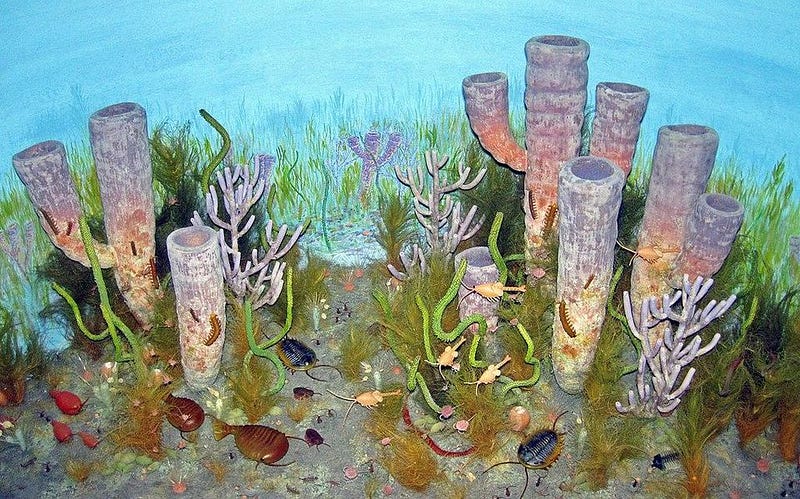
It was only a short period of time, until 540 million years ago, that the first true vertebrates arose. These early chordates mark the first appearance of the human phylum: chordata. The earliest fossils with spinal columns looked like lampreys, hagfish, and eels. Everything from sharks to tortoises to peacocks to humans can trace their ancestry back to these more primitive creatures.
Over the next 10 million years, a great diversity of body types finally starts to appear in the fossil record, along with the first appearance of trilobites. These invertebrates, which looked like enormous, 70 cm (a little over two feet) long lice, would remain the dominant form of life in the ocean for the next 200 million years.
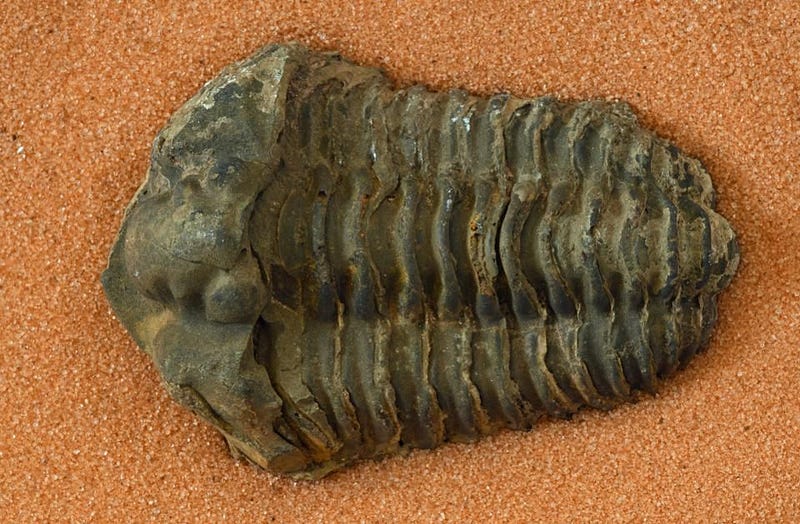
But life didn’t remain in the ocean. Approximately 500 million years ago, the first animals began exploring the land. 470 million years ago, plants followed suit, quickly colonizing the entire surface. 460 million years ago, fish split off into bony fish (like salmon, trout, tuna, and most of the fish with scales) and cartilaginous fish (like sharks, with cartilage-based skeletons instead of bone).
Ocean life remained dominant, even after the great end-Ordovician mass extinction 440 million years ago, theorized to be a rapid ice age, which wiped out some 86% of all species. The surviving fish split into lobe-finned fishes (with bones in their fins), which would evolve into amphibians, reptiles, dinosaurs, birds, and mammals, and the ray-finned fishes, which evolved into most modern fish. So-called living fossils, like coelacanths and lungfish, evolved 420 million years ago from the lobe-finned fishes. They remain in a largely unchanged form today.
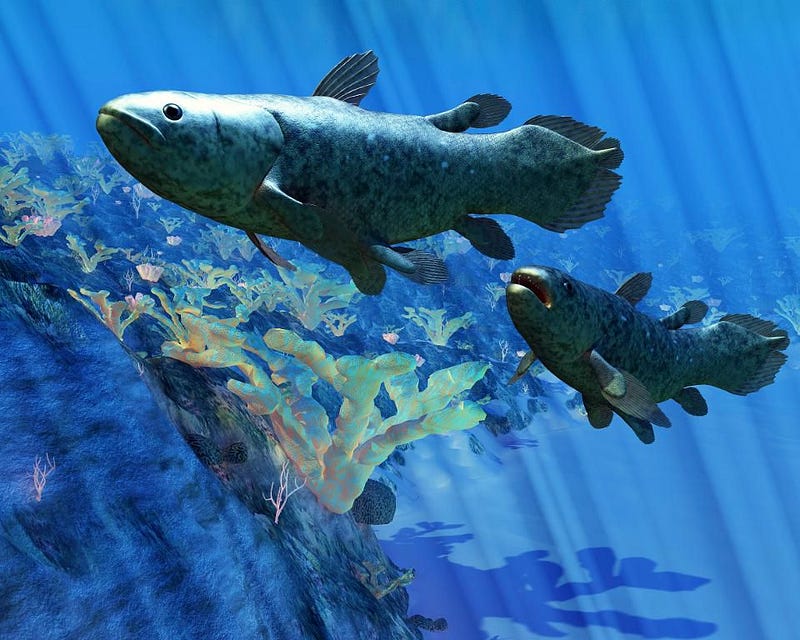
Meanwhile, an enormous set of changes gets set into motion about 400 million years ago. The first insects evolve, and the land plants begin to develop woody stems. Almost simultaneously, the first four-legged animals evolve, moving from freshwater habitats onto land. The tetrapods were the first animals to arrive on land, and were never successfully displaced, despite all the extinction events that would subsequently occur.
Trees, shortly thereafter, must have developed, as the oldest fossilized tree presently dates to 385 million years ago. Everything was going extremely well for life, until about 375 million years ago, when the next great mass extinction occurred: the late Devonian extinction. It’s hypothesized that a series of algal blooms sucked the oxygen out of the ocean, suffocating some 75% of marine species altogether.
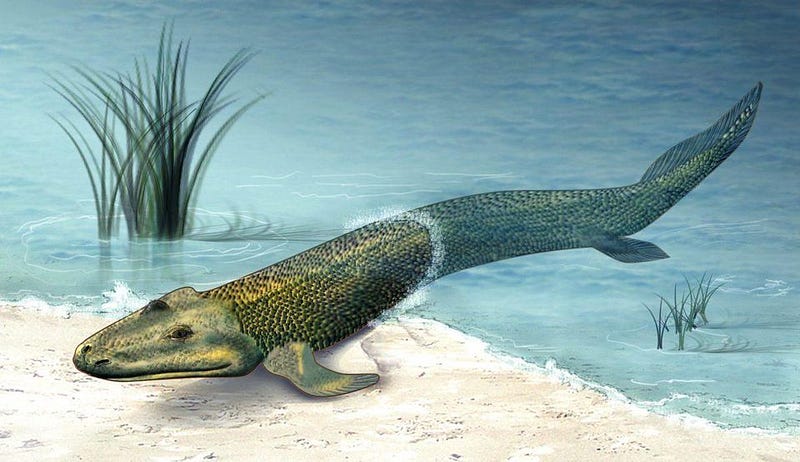
But great extinction events are almost always followed by life resurging in quantity, biomass, and diversity. 340 million years ago, the amphibians rose to prominence. Dimetrodon, a large, carnivorous reptile, became the dominant apex predator on land at around the same time.
310 million years ago, there was an important evolutionary split between the sauropsids, which would become the modern reptiles, dinosaurs, and birds, and the synapsids, which were reptiles with distinctive jaws. These latter reptiles would eventually evolve into all the mammals ever to populate Earth. Dimetrodon-like animals and their close cousins, the therapsids (which arose 275 million years ago), are the dominant synapsid land animals at this time.
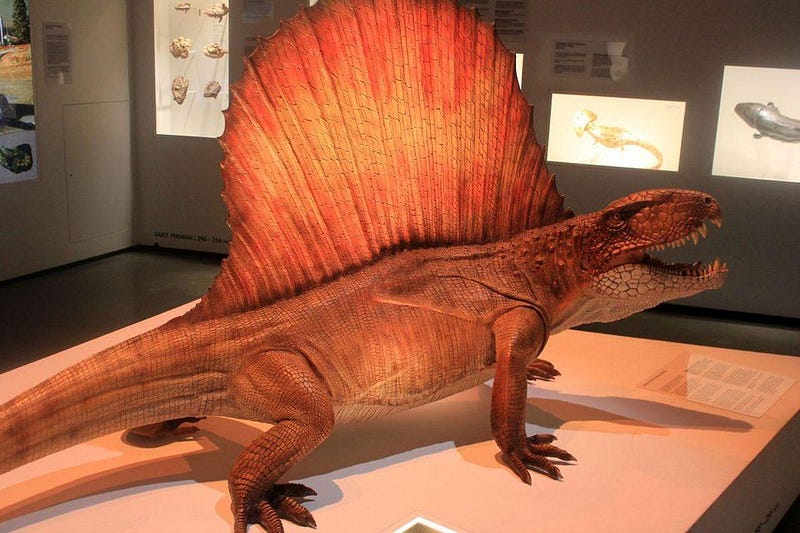
And then the biggest mass extinction ever known on our planet occurred: the end-Permian extinction. 250 million years ago, from an unknown cause, a whopping 96% of species on Earth cease to exist. The last of the trilobites, debilitated by the prior mass extinction, are driven out of existence. Dimetrodon and its relatives are wiped out; some therapsids barely survive.
But the sauropsids, previously living in the shadows of synapsids, rise to dominate the world. The explosion of sauropsids heralds the rise of dinosaurs and large ocean-dwelling reptiles, with the synapsids — our mammalian ancestors — surviving as small, nocturnal creatures. The cynodonts, a form of therapsid, first arose just before the Permian extinction: around 260 million years ago. The cynodonts developed dog-like teeth, while their descendants became warm-blooded approximately 200 million years ago. The end-Triassic extiction, concurrent with this development, wiped out 80% of species; it has no known cause at present.
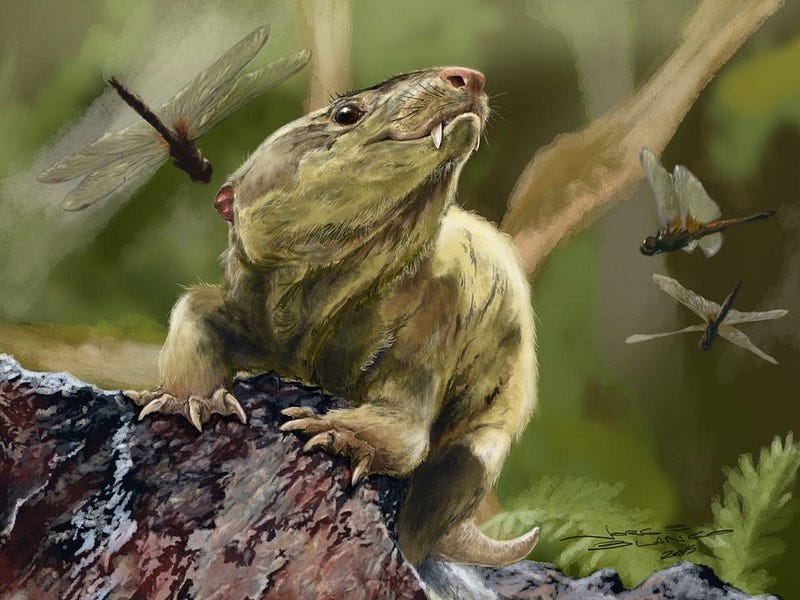
On land, the dinosaurs became the dominant form of animal life around this time, roughly 200 million years ago. Shortly thereafter, the first bird-like features began appearing among them: bird-like footprints, evidence of feathering, and vestigial wings that help running animals balance. Large crocodiles evolved, eliminating the giant amphibians.
Cynodont-descended mammals continued to survive while most other synapsids went extinct. 180 million years ago, the monotreme (egg-laying) mammals like the duck-billed platypus and echidna split off; 140 million years ago, so did the marsupials and placental mammals.
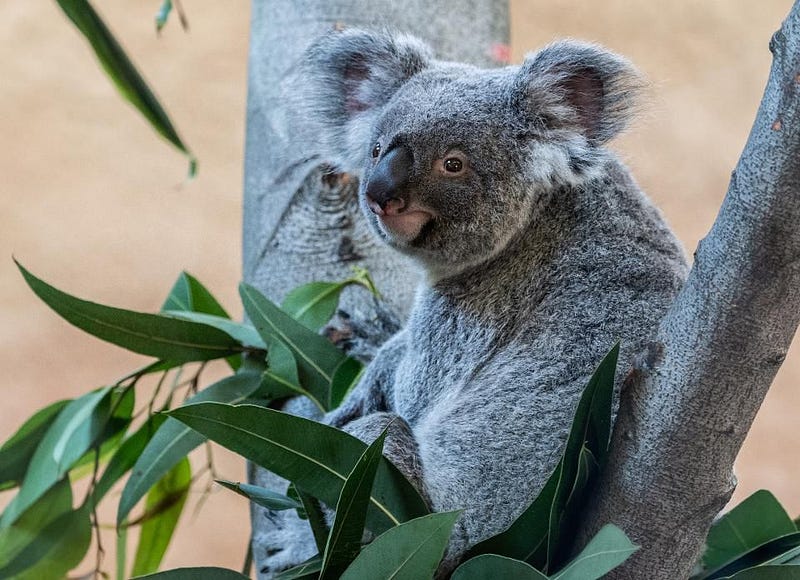
In the plant world, conifers begin this era as the dominant form of tree, but angiosperms and other flowering plants arise some 130 million years ago, eventually dominating the Cretaceous. In the oceans, the great marine reptiles — the plesiosaurs — rose to prominence, along with ichthyosaurs, ammonites, squids and octopi.
By the time we get to 100 million years ago, and the largest, most famous dinosaurs dominate the landscape, the world is filled with flying birds, deciduous trees, pterosaurs, insects, and the legendary predators and herbivores common during the Cretaceous. The world starts cooling at around this time, leading to a slow decline and a decrease in size of many of these animals. Many birds become smaller and occupy a diversity of ecological niches. But perhaps the most interesting developments occur in our mammalian ancestors.
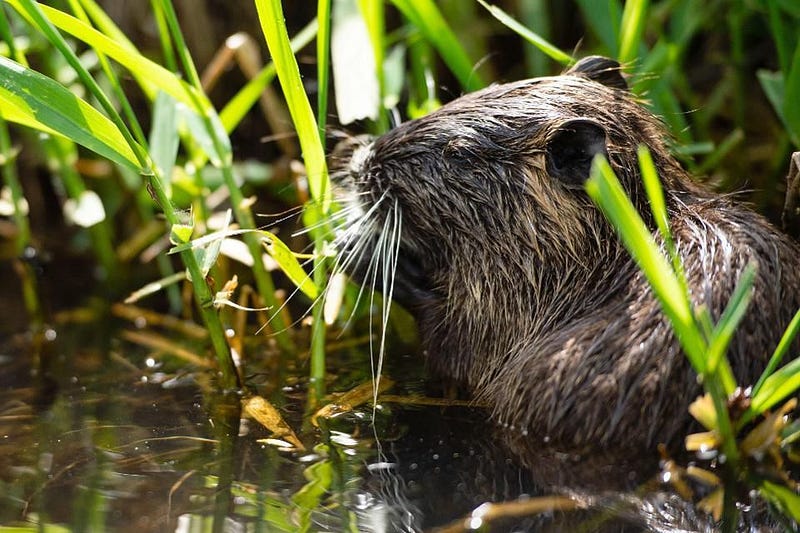
Some 95 million years ago, an evolutionary split occurs among the placental mammals, giving rise to the laurasiatheres (horses, pigs, dogs, bats, etc.), the xenarthra (like anteaters and armadillos), the afrotheres (such as elephants and aardvarks), and the euarchontoglires (including primates, rodents, and lagomorphs). 75 million years ago, another split occurred, as the ancestors of modern primates split off from the remaining euarchontoglires; the rodents will become the most successful, eventually making up 40% of all modern mammals.
70 million years ago, the first grasses evolve, followed another 5 million years later by the most catastrophic event in the past 100 million years: the end-Cretaceous extinction, likely triggered by an enormous asteroid strike that created the Gulf of Mexico and the Yucatan peninsula.
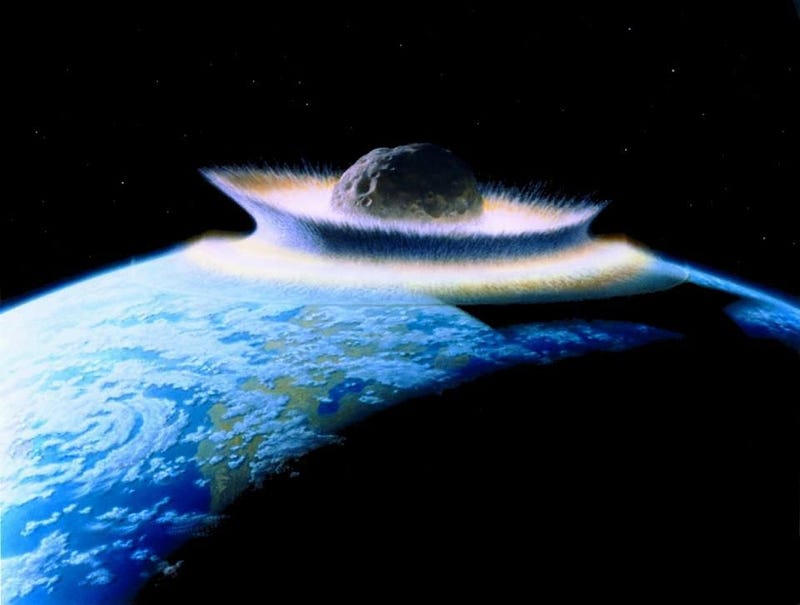
Although the Deccan traps and other volcanic activity certainly played a role in the steady decline of dinosaurs during the late Cretaceous, the arrival of a massive asteroid left a telltale layer of catastrophe all over the world. This giant impact triggers an extinction event that wipes out huge classes of species of animals: 75% of all species in total.
Abruptly, 65 million years ago, the fossil record ceases to show all non-avian dinosaurs, pterosaurs, ichthyosaurs and plesiosaurs. The giant reptiles are all gone. The ammonites are wiped out; the nautilus is their oldest surviving relative. With the exception of a few animals like leatherback sea turtles and crocodiles, no creature weighing more than 55 pounds (about 25 kg) survives.
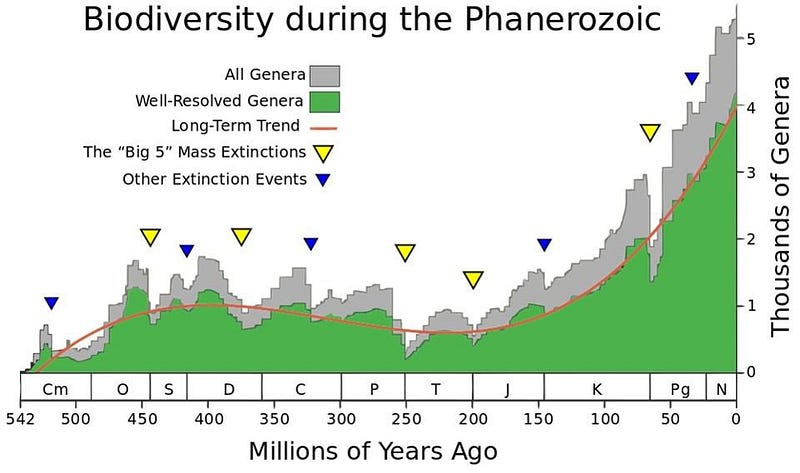
But the small mammals did, and would go on to dominate the world. As is often the case, a large extinction event clears the way for new species to develop and grow to prominence. Having thoroughly diversified to occupy a variety of niches already, the mammals were poised to make that enormous leap.
65 million years ago, 99.5% of the Universe’s history had already unfolded, and yet the ancestors of modern humans were no better developed than a modern-day lemur. Complex, differentiated animals had already existed for half-a-billion years, but it seems to be mere chance that led to the rise of an intelligent, technologically-advanced species like us. We do not yet know what secrets other planets hold as far as life goes, but here on Earth, the most remarkable story of all was just getting truly interesting.
Further reading on what the Universe was like when:
- What was it like when the Universe was inflating?
- What was it like when the Big Bang first began?
- What was it like when the Universe was at its hottest?
- What was it like when the Universe first created more matter than antimatter?
- What was it like when the Higgs gave mass to the Universe?
- What was it like when we first made protons and neutrons?
- What was it like when we lost the last of our antimatter?
- What was it like when the Universe made its first elements?
- What was it like when the Universe first made atoms?
- What was it like when there were no stars in the Universe?
- What was it like when the first stars began illuminating the Universe?
- What was it like when the first stars died?
- What was it like when the Universe made its second generation of stars?
- What was it like when the Universe made the very first galaxies?
- What was it like when starlight first broke through the Universe’s neutral atoms?
- What was it like when the first supermassive black holes formed?
- What was it like when life in the Universe first became possible?
- What was it like when galaxies formed the greatest numbers of stars?
- What was it like when the first habitable planets formed?
- What was it like when the cosmic web took shape?
- What was it like when the Milky Way took shape?
- What was it like when dark energy first took over the Universe?
- What was it like when our Solar System first formed?
- What was it like when planet Earth took shape?
- What was it like when life began on Earth?
- What was it like when Venus and Mars became uninhabitable planets?
- What was it like when oxygen appeared and almost murdered all life on Earth?
- What was it like when life’s complexity exploded?





